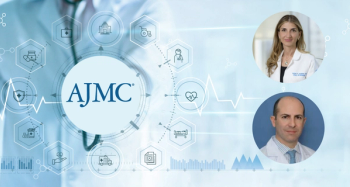
T1D Community Helped Create T1D Index, Says JDRF's Tom Robinson
Tom Robinson, vice president of global access at JDRF, talks about how the community and people living with type 1 diabetes (T1D) have contributed to the T1D Index, from development to publication and going forward.
"I think that's one of the most powerful things about the Index. It's not just the science we've done today, but the science we get to do tomorrow," said Tom Robinson, vice president of global access at JDRF.
Transcript
What has been your favorite part of developing the T1D Index?
I think one of the best things about developing this has been, we've had this extraordinary generosity from people living with type 1 who've contributed, both on the scientific side—about the epidemiology and what to measure—and then also on how we share it with the world. For example, the concept of missing prevalence, which I think is quite novel and is really good epidemiology. I think it's a better measure of mortality than deaths because it's a stronger correlation with DALY [disability-adjusted life-year] metrics or HALY [disability-adjusted life-year] metrics; it's more closely linked to burden. That concept came from a parent of someone with type 1 saying, "I still miss my son." That involvement, I think, has enriched the science.
Then also, when it comes to the site and how to share it with the world and how we foregrounded the interventions and so forth like that, that again has come out of that engagement with that lived experience, people with experience. Things like having a trigger warning on the site, when people first arrive. Things like how we present the interventions and link the people quickly through to taking action in specific areas. One of the pieces of feedback I really loved hearing was, "Hey, you've defined the whole problem here and now I can pick the bit I have the most affinity with and work on that, but now it's contributing to the greater whole."
All of this has come out of this engagement—I think about 50 people have been really generous with their time—and I think it's made the index better. But I think it's also a good example of why that sort of engagement with people with lived experience of a condition is so powerful. I see it sometimes done tokenistically, "We've got to get someone on the panel." It can be powerful, really powerful if you get them involved early enough and often enough.
I think we will continue to see this evolve with that input. I'm looking forward to feedback. I'm sure we will improve our language. I'm sure we will improve our modeling. We will start counting new things and different things and taking it to some different places. There will be interventions we haven't even thought of. And all that change is going to come straight out of the community, whether it be patients or doctors or allied health or whatever it may be.
I think that's one of the most powerful things about the index. It's not just the science we've done today, but the science we get to do tomorrow.
Newsletter
Stay ahead of policy, cost, and value—subscribe to AJMC for expert insights at the intersection of clinical care and health economics.













































